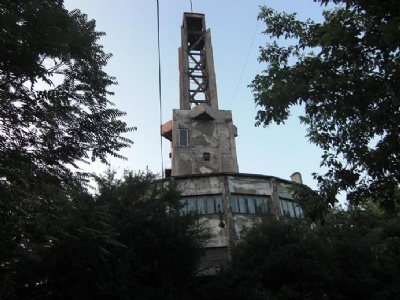Sajmište
Before the outbreak of the Second World War Sajmiste was a rather dilapidated marketplace next to the Sava river southwest of Belgrade. The river formed the border between the newly independent state of Croatia and the German-occupied Serbia. Therefore, the Germans were officially obliged to request permission from Croatia to set up a camp in Croatian area. The German-friendly Ustasa regime in Croatia had no objection because they had common enemies. The camp was established in December 1941 to house Serbian antinazists, communists, gypsies and Jews.
During summer and autumn 1941, Serbian Jewish men had been murdered by units within the Wehrmacht and not by Nazi Einsatzgruppen. Wilhelm Keitel had, after the occupation of Yugoslavia, issued an order whereby for every German soldier murdered by what the germans called partisans, 100 Serbian men were to be executed. Wehrmacht, however, refused to execute women and children, and therefore, in December, 1941, hardly any Serbian Jewish men were alive. Serbian Jewish women and children still alive were imprisoned in Sajmiste while waiting to be deported to Eastern Europe up north.
In addition to these Jews, the Nazis also began to house remaining Jews and gypsies in the camp. The conditions thus became even worse than before in the narrow and unheated wooden barracks. This meant that a large part of the prisoners froze or starved to death or died from contagious diseases. In spring, 1942, the gypsies were moved but the Jews remained. Local Nazi authorities regularly complained and appealed to Berlin that the Jews in Sajmiste must be deported to northern eastern Europe as soon as possible. The lack of cooperation from Berlin, the local Nazis made a request to have a gas wagon. Then they could solve the "Jewish problem" by themselves in Belgrade. The request was granted and in March 1942, the gas wgon arrived in Sajmiste.
Between March and May, 1942, about 7,000 - 8,000 Jews were killed in Sajmiste and most of them in the gas wagon. The vicitims were after being killed buried in Jajinci south of Belgrade. However, the camp continued to exist until it was liquidated in autumn 1944. Up til then mostly partisans and communists were imprisoned. It is difficult to estimate the number of deaths but about 40,000 Serbs and about 7,000 – 8,000 Jews died in Sajmiste.
Current status: Demolished with monument (2009).
Location: 44° 48' 46" N, 20° 26' 42" E
Get there: Walk from central Belgrade.
Follow up in books: Gilbert, Martin: The Holocaust: A History of the Jews of Europe During the Second World War (1987).



In the spring of 1942, the head of SIPO and SD in Serbia, SS-Standartenführer, Emanuel Schäfer, declared Belgrade as the first major city in Nazi Europe free of Jews (Judenfrei). The majority of Serbian Jews died in Sajmiste, but no information about this is to be found at the site. It is also hard to know what might be a remnant of the camp at what is not.